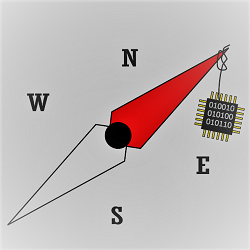Following the ancient Chinese who fabricated magnetic needles to explore the world, we are placing magnets at the end of fine needles in a search for a new computer.
Everybody is used to electricity. It powers from your watch to a skyscraper’s lift, but, what if we could make things better by using magnetism?
In today’s computers, information is processed in the form of electrons that travel between components. At the same time that electrons perform calculations on your behalf they are acting like tiny heaters, continuously draining the battery. Scientists and engineers work intensely to reduce heating effects, buy there are fundamental limits that make difficult to achieve better devices. That is why we are performing research in Magnetism.
An explorer uses the information that the magnetic core of the Earth communicates to its compass needle. In a similar manner, magnetic atoms can propagate information between each other without big energy costs. The key to this exchange is the sharing of electrons that happens when atoms get very close to each other. We are exploring how to harness this effect to make more efficient devices.
In my research I employ some of the World’s most complex 3D printers and X-ray machines to create the building blocks of a future magnetic computer. I make devices at the nanoscale to then take X-ray images of the magnetic interactions that happen within the material.
To get as much information as possible we need to X-ray these new devices from many angles. But they are too small to pick up and move around. The tip of a needle is one thousand times bigger than these devices, and, as it turns out, the perfect place to print them!
Dédalo Sanz Hernández
NanoDTC PhD Associate 2015
Department of Physics

